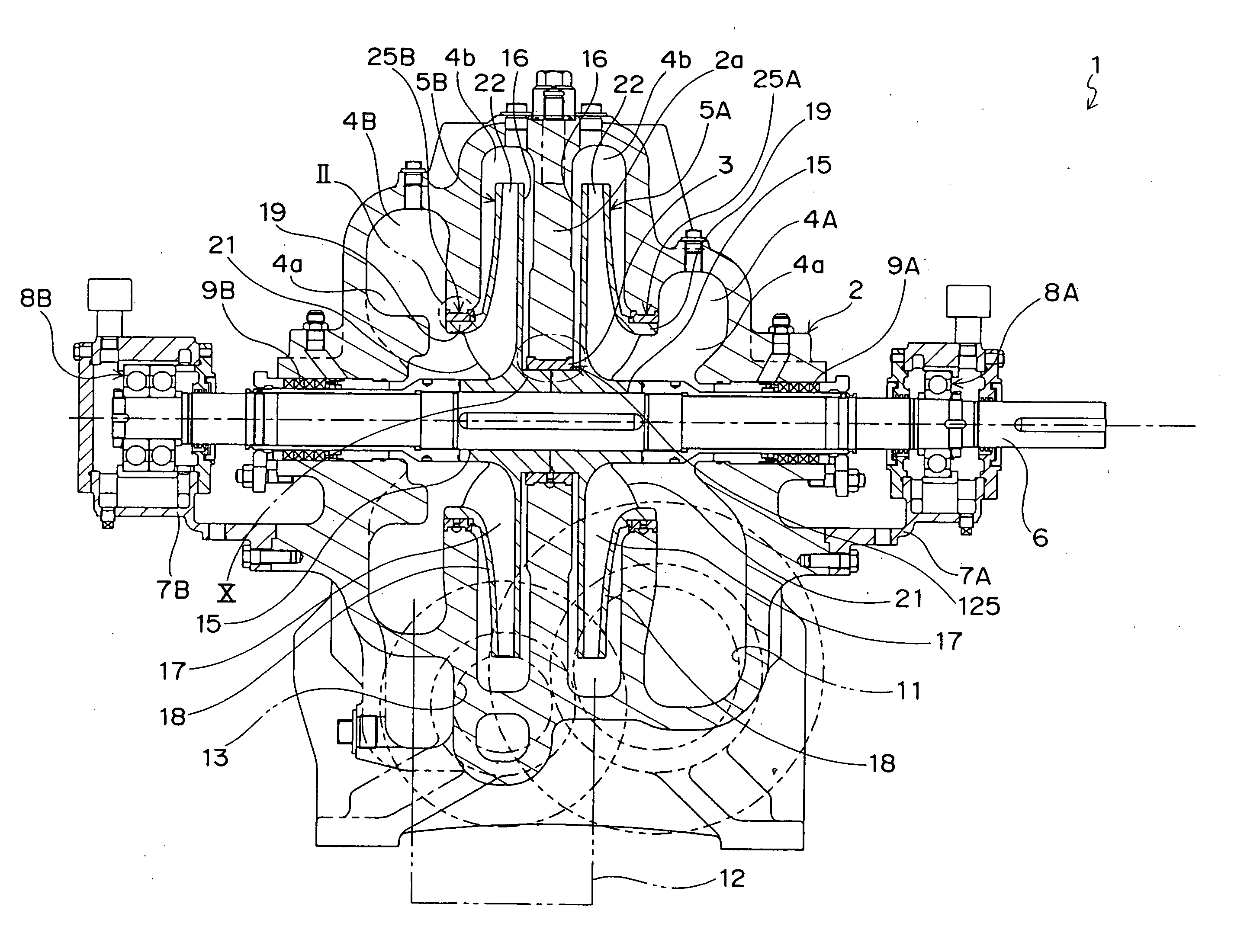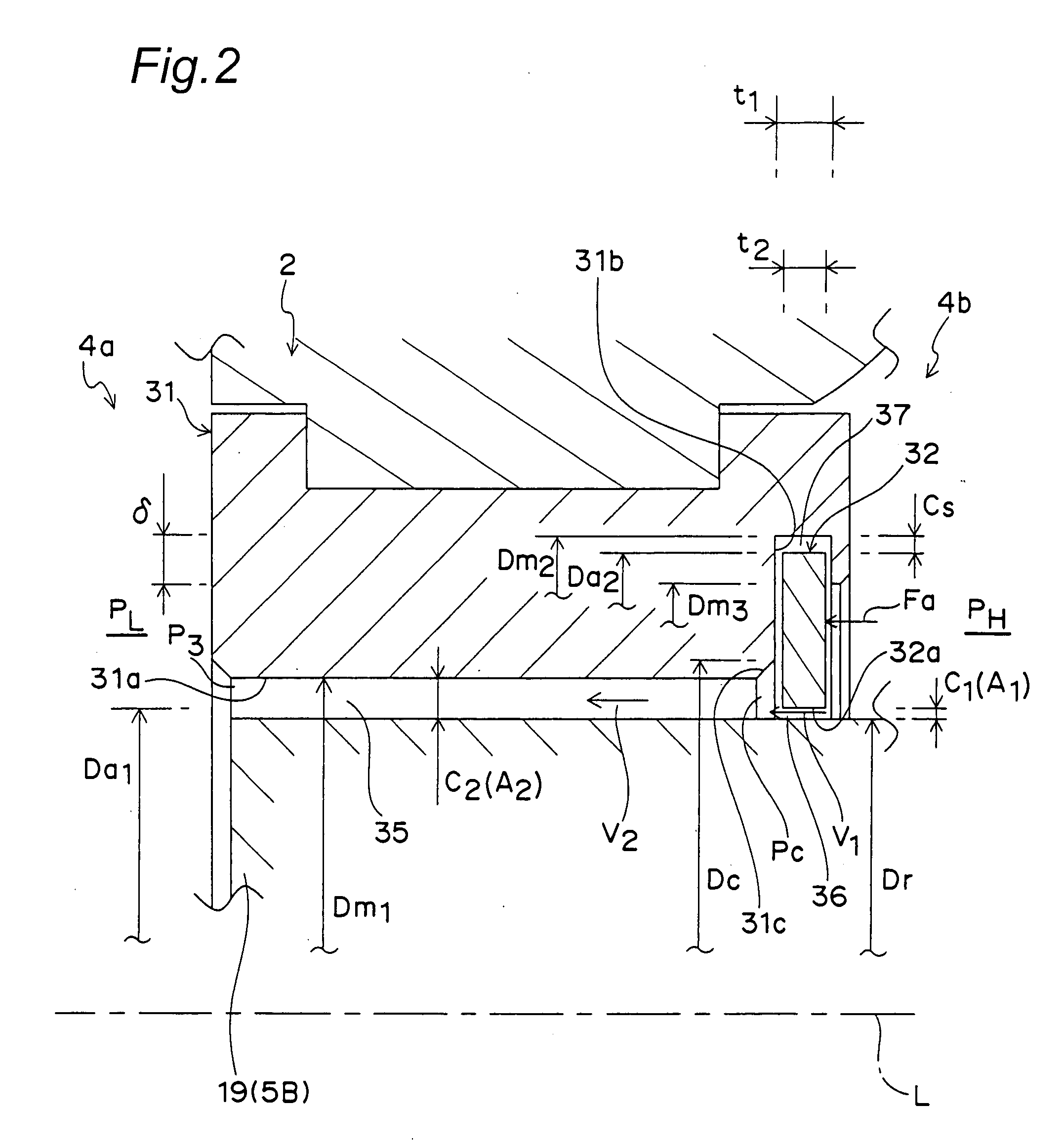Seal device for a fluid machine
a fluid machine and sealing device technology, applied in the direction of machines/engines, stators, liquid fuel engines, etc., can solve the problems of reducing the efficiency of fluid machines, and limiting the reduction of leakage, so as to reduce leakage losses, increase the efficiency of fluid machines, and prevent vibration
- Summary
- Abstract
- Description
- Claims
- Application Information
AI Technical Summary
Benefits of technology
Problems solved by technology
Method used
Image
Examples
Embodiment Construction
[0025]FIG. 1 shows a two-stage centrifugal pump 1 comprising seal devices according to embodiments of the present invention. First stage and second stage volute sections 4A, 4B are formed inside a casing 2 of the centrifugal pump 1. Positioned between the first stage volute section 4A and the second stage volute section 4B is a partition portion 2a of the casing 2, to which an inter bush 3 is fixed as described later in detail. A first stage impeller 5A and a second stage impeller 5B are respectively disposed, with a left-right symmetry, in the volute sections 4A, 4B. These impellers 5A, 5B are fixed to a main shaft (rotary shaft) 6 extending in the horizontal direction. The main shaft 6 extends through the casing 2. A pair of bearing brackets 7A, 7B are fixed to the casing 2, and both ends of the main shaft 6 are rotatably supported by bearings 8A, 8B accommodated in these bearing brackets 7A, 7B. Further, a pair of gland packing 9A, 9B for sealing is respectively installed in port...
PUM
 Login to View More
Login to View More Abstract
Description
Claims
Application Information
 Login to View More
Login to View More - R&D
- Intellectual Property
- Life Sciences
- Materials
- Tech Scout
- Unparalleled Data Quality
- Higher Quality Content
- 60% Fewer Hallucinations
Browse by: Latest US Patents, China's latest patents, Technical Efficacy Thesaurus, Application Domain, Technology Topic, Popular Technical Reports.
© 2025 PatSnap. All rights reserved.Legal|Privacy policy|Modern Slavery Act Transparency Statement|Sitemap|About US| Contact US: help@patsnap.com



